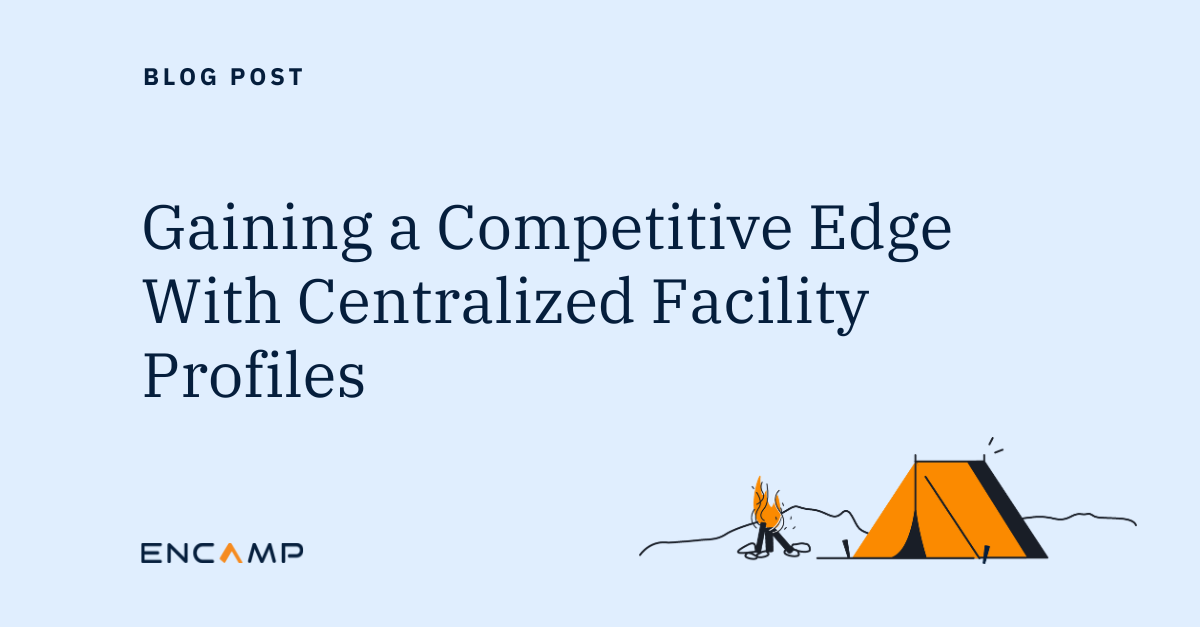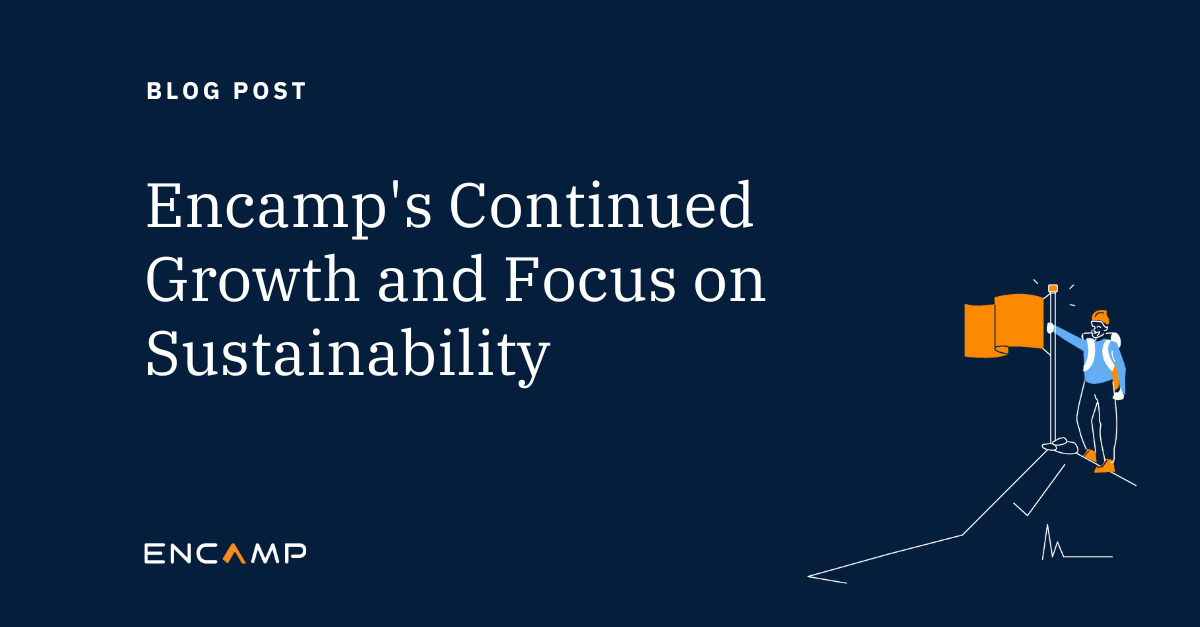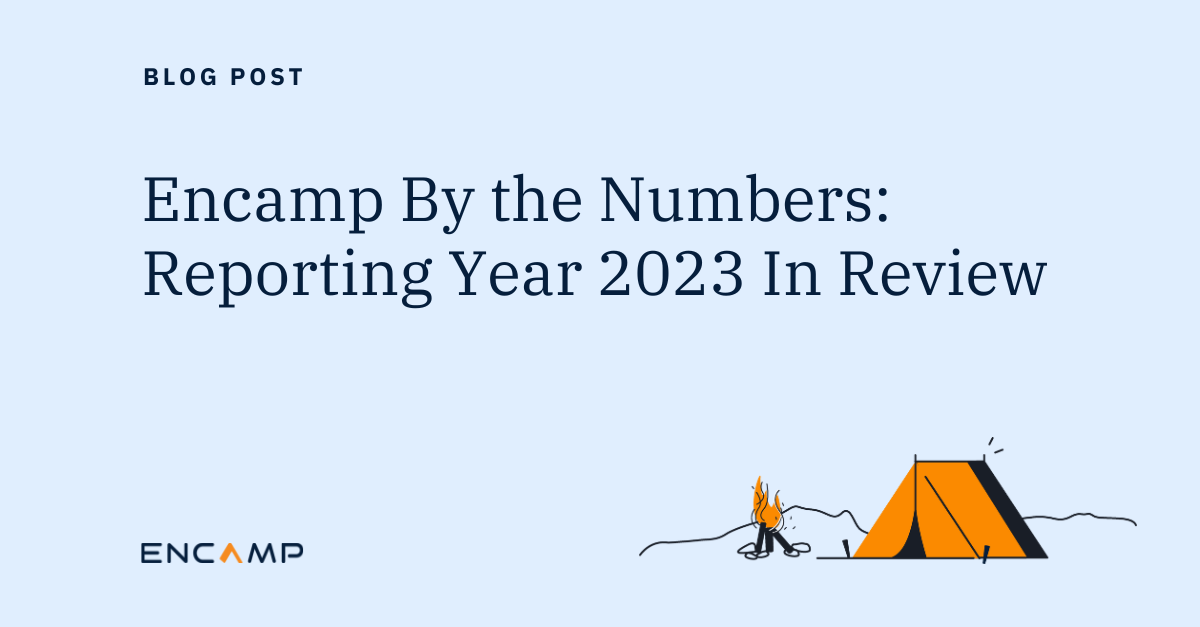Rule #1 for EPCRA, Tier II reporting, and environmental compliance: Accurate data is everything.
Consider Tier II activities this way. If you break down the process by data management tasks, the Tier II lifecycle for reporting typically consists of four phases:
- Data collection
- Data validation
- Data input
- Data submissions
So ultimately, how you track and manage data can be the difference between filing complete and accurate EPCRA Tier II submissions on time… or facing non-compliance violations for reports that are late and full of errors.
Central to Encamp’s Guided Environmental Compliance method
Data management is also central to the Guided Environmental Compliance method from Encamp. To improve data visibility and control, the method promotes establishing a strong foundation for compliance data and creating a continuous data collection process as initial steps. And by blending digitization, high-tech solutions and the high-touch support of Encamp’s compliance experts in a technology-driven system, Guided Environmental Compliance tightly and continually aligns with the Tier II lifecycle.
A better way to approach Tier II work
For EHS and Operations teams, taking a lifecycle approach to Tier II work makes it easier to manage the actual tasks of data collection, validation, input, and submission. Yet each phase can still be a challenge in and of itself.
All four “challenges” were magnified in calls Encamp had recently with prospective customers, which included:
- The Environmental, Health & Safety Manager of U.S. operations for a multinational manufacturer of reagents, fine chemicals, and specialty chemicals. This manager orchestrates all Tier II reporting for the company’s U.S. facilities.
- The Environmental Manager and EHS team members of a chemical manufacturer that operates 350 regulated facilities and maintains a library of 7,000 chemicals, 5,000 of which must be reported on for EPCRA and TPQ requirements.
- Team members of an environmental consulting firm that manages the Tier II reporting efforts for various companies throughout the U.S.
Based on the conversations we had with these EHS professionals (and hundreds of other interactions just like them), we’ve spelled out the Tier II lifecycle, key challenges that come with each phase (in the customers’ words), and how EHS and Operations teams can effectively navigate them.
Each scenario further includes how Encamp’s Tier II Reporting module can help you enhance your company’s compliance program and reporting practices for EPCRA. (Encamp’s Guided Environmental Compliance method also builds on this lifecycle by blending our technology with the high-touch support of our compliance and regulatory experts.)
The Tier II Lifecycle
Data collection
“Our EPCRA reporting hasn’t reached the level of being supported as a corporate-wide function, so I collect all the data myself. I retrieve information each month to keep up, but it always takes a while to make sure I capture everything we have in inventory. Our chemicals list is already extensive, and we routinely have a lot of raw materials and finished goods to be added at each facility throughout the year.”
First, kudos to this EHS manager for gathering data on a monthly basis. Especially for data collection and validation, a good rule of thumb is to have compliance data ready to review the first week of January. (Note: The months and date ranges we’ve included are a general timeline for when reporting activities should occur to be most effective.)
- Outreach to sites/facilities (usually between July-November)
- Data collection and determining threshold planning quantities (TPQs) at each facility
- Data collection returned for Tier II preparations (December)
Tier II Reporting module actions
- Review each facility’s information, contact information, and regulatory status and update as needed.
- Verify your list of products/chemicals at each facility (you can compile and maintain each list using Encamp’s Facilities module).
- Add any new chemicals to be reported on and update inventories and storage locations. Encamp automatically tracks threshold limits, days on site, and the average and maximum daily amount for all chemicals.
- Add required state-specific information to Tier II reports.
“As far as your data collection goes, the earlier you can start the better.”
– Megan Walters, CHMM, Encamp’s VP of Compliance & Customer Success
Data validation
“We represent various clients for Tier II, so every year we have to update and confirm the chemical list and inventory levels for each client. We typically do that in October and November and gauge it against the latest requirements for EPCRA, then do our validations after that. But with so many ‘moving pieces’ and no updates to a client’s chemical inventories during the year, we sometimes second guess how accurate data really is.”
Inaccurate data is often the result of chemicals and mixtures being reported inconsistently — and thereby incorrectly — along with human error and the lack of a formal QA/QC process to ensure data quality and hygiene. In fact, insufficient validation is one of the most common problems of Tier II reporting.
- Initial data validation for Tier II reports (December-January)
Tier II Reporting module actions
- Ensure accurate data via the module’s built-in, automated validation and review checks — it even flags chemicals that may not need to be reported on based on inventory levels.
- Ensure that inventories for chemical mixtures are properly calculated on percent composition.
Data input
“We have facilities in several different states and need something to help us keep track of what’s been submitted so we don’t miss any sites or their requirements. Tracking our Tier II submissions by email or Windows folders the way we do now, it gets messy.”
It’s surprising, but some companies don’t even realize EPA regulatory requirements like EPCRA Sections 311 and 312 apply to their sites, certain hazardous chemicals, and even components and mixtures for lead-acid batteries. Not surprisingly, this is another topmost common problem of Tier II reporting.
- Data entry to state reporting (January-February)
- Data entry reviewed and signed by internal EHS principal(s)
Tier II Reporting module actions
- Populate and format reports for each facility in accordance with all requirements based on the facility’s location.
- Identify suspected errors with built-in validation checks, which makes it easy for reviewers to correct.
- Preview populated Tier II reports to check for missing or incorrect information, another checkpoint at which to fix errors.
- Per state, verify and submit your Tier II report once you’ve corrected any mistakes at the review stage and made sure there are no other red flags.
- Say goodbye to cut and paste reporting, stuffing reports into envelopes, manually filling out Tier II forms, and waiting for finance to cut a check to pay filing fees.
Data submissions
“Our goal is to reduce the time it takes to go through the process for submitting Tier IIs, and get to where we know we’re compliant across all facilities. And we won’t even mention having to send reports and pay fees to all the SERCs, LEPCs and local fire departments. It’s time consuming!”
- Admin work completed (March 1 reporting deadline)
- Inventory management (EPCRA Sections 302, 311, ongoing)
Tier II Reporting module actions
- Just hit Submit and Encamp electronic report submissions are automatically uploaded to the respective state reporting systems.
- Let Encamp also handle mailed submissions where required, and pay all filing fees on your behalf (we then send you the consolidated bill).
- For additional EPCRA Section 302 or 311 filings (if needed), onsite inventory management is ongoing with Encamp and the Tier II Reporting module.
- Meet California state requirements, since Encamp is able to fully support California’s HMBP reporting program.
Transforming the way enterprises stay in compliance
Encamp is on a mission to create a world where good for business can equal good for the environment. We help enterprises transform compliance programs and human processes into a technology-driven system that lays the foundation for accurate and ongoing environmental compliance through a blended method of intelligent high-tech solutions and high-touch expert support.
Tom Bailey
Tom is the Senior Content Writer at Encamp. And like all other Encampers, he’s in tune with the environment and what happens to it. He’s been writing about creative technology solutions for longer than he cares to admit.



